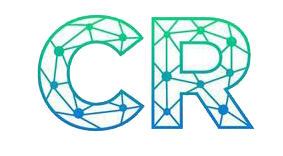Key Takeaways
Is Ethereum’s developer activity translating into network growth?
Ethereum’s TVL has climbed to $85 billion, maintaining a 56% share of DeFi, showing that the new developer influx is directly fueling adoption.
What are developers focusing on in 2025?
The devs are prioritizing scaling and efficiency, with innovations like Pico Prism pushing throughput RWA tokenization to $12 billion.
Ethereum [ETH] continues to ride its “legacy blockchain” status. And yet, it remains remarkably competitive despite a market crowded with faster, more scalable alternatives. The secret? It’s ETH’s developer community.
As AMBCrypto flagged, Ethereum added 16,181 new developers in the first ten months of 2025, bringing the total to 31,869. That’s a clear signal that it continues to attract builders, helping maintain ETH’s competitive edge.
But is this momentum actually driving network growth? A comparable surge in dev activity was last seen in 2019–2020, right before the DeFi boom. In this context, is ETH set for another meaningful adoption cycle?
Rising dev activity precedes Ethereum’s DeFi explosion
Ethereum’s developer ecosystem saw a big expansion in 2019 and 2020.
In 2020, Ethereum onboarded more than 300 new developers every month. This influx of talent caused the number of developers actively working on DeFi projects to jump by 67% compared with the start of the year.
In fact, this surge coincided with the launch of DeFi platforms like Uniswap, creating the foundation for Ethereum’s rapid adoption. The result? Its Total Value Locked (TVL) surged from $700 million to $15 billion by early 2021.


Source: DeFilLama
In short, rising developer activity has directly fueled network growth.
Fast-forward to now, Ethereum’s TVL stands at $85 billion, representing roughly 56% of the entire DeFi sector and reflecting a $20 billion increase since the beginning of 2025, keeping ETH at the forefront of DeFi adoption.
In this context, the addition of 16,181 developers this year isn’t just a number. Instead, it suggests that the network is actively building to sustain growth and maintain its market dominance amid increasing competition.
Developer focus shifts toward network efficiency
Ethereum’s scaling efforts have made significant strides this year.
With innovations like Pico Prism, the network is edging closer to handling up to 10,000 transactions per second, while the gas limit has surged 50% to 45 million, allowing smoother execution across the ecosystem.
Simply put, developers are shifting their focus toward scaling solutions to enhance network efficiency, rather than building entirely new protocols.
This shift has driven a 200% surge in the total value of tokenized assets on Ethereum, now totaling $12 billion.


Source: RWAxyz
For context, a 200% jump in real-world asset (RWA) tokenization in 2025 alone highlights that Ethereum’s scaling efforts are attracting institutional-level participation, enabling enterprises to tokenize assets.
By optimizing network throughput, ETH developers are clearly prioritizing infrastructure-focused work. This shift shows that the network’s performance improvements are directly translating into tangible adoption.
Evidently, even if ETH’s price isn’t hitting new all-time highs, the Ethereum network is steadily growing across DeFi protocols and the tokenized market, making developer activity a critical read for ETH’s future growth potential.







